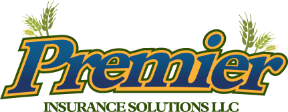Based on the dry conditions this summer, and into the fall, coupled with the lack of snow as I’m writing this, it is hard to think that we could have a wet spring challenging us to get crops in the ground in a timely fashion. Things can change very quickly though, and we need to keep a few things in mind as it pertains to our crop insurance policy and being prevented from planting acres.
First and foremost, if you have questionable areas as we approach the end of May, reach out to your agent to discuss. We need to file a claim as soon as we’ve identified an issue and there are a number of qualifications to discuss so we can determine if acres are eligible and how they would get paid should you decide to claim prevent plant. Some key qualifying questions are as follows:
Is the prevented area at least 20 acres or 20% of the total acres of that crop in that unit? If it is less than that, they will not qualify. You can combine areas within a unit to reach those parameters. For example, four 5-acre areas would satisfy this requirement.
Have the prevented acres been planted, harvested, and insured in one of the last 4 years? If they have not, they will not qualify. This includes acres new to your operation.
Have you significantly changed your rotation? This may cause problems when it comes to eligible acres as you are only allowed to claim prevent plant on the highest number of acres you have planted in the past 4 years for that crop. If you have added land, this eligibility will get increased by the % of cropland you have added to your operation. This is a very important discussion with your agent so there are not any surprises when the claim gets settled.
One positive change made for the 2022 crop year was the relaxing of the cover crop rule. You are now allowed to plant a cover crop on prevent plant acres and harvest that cover crop without penalty. Cover crops can be hayed, grazed, or chopped but not harvested for grain. Corn is not allowed as a cover crop.
Communication is key when navigating through a prevent plant situation.
Reach out to your agent as soon as you feel you may have a problem.

